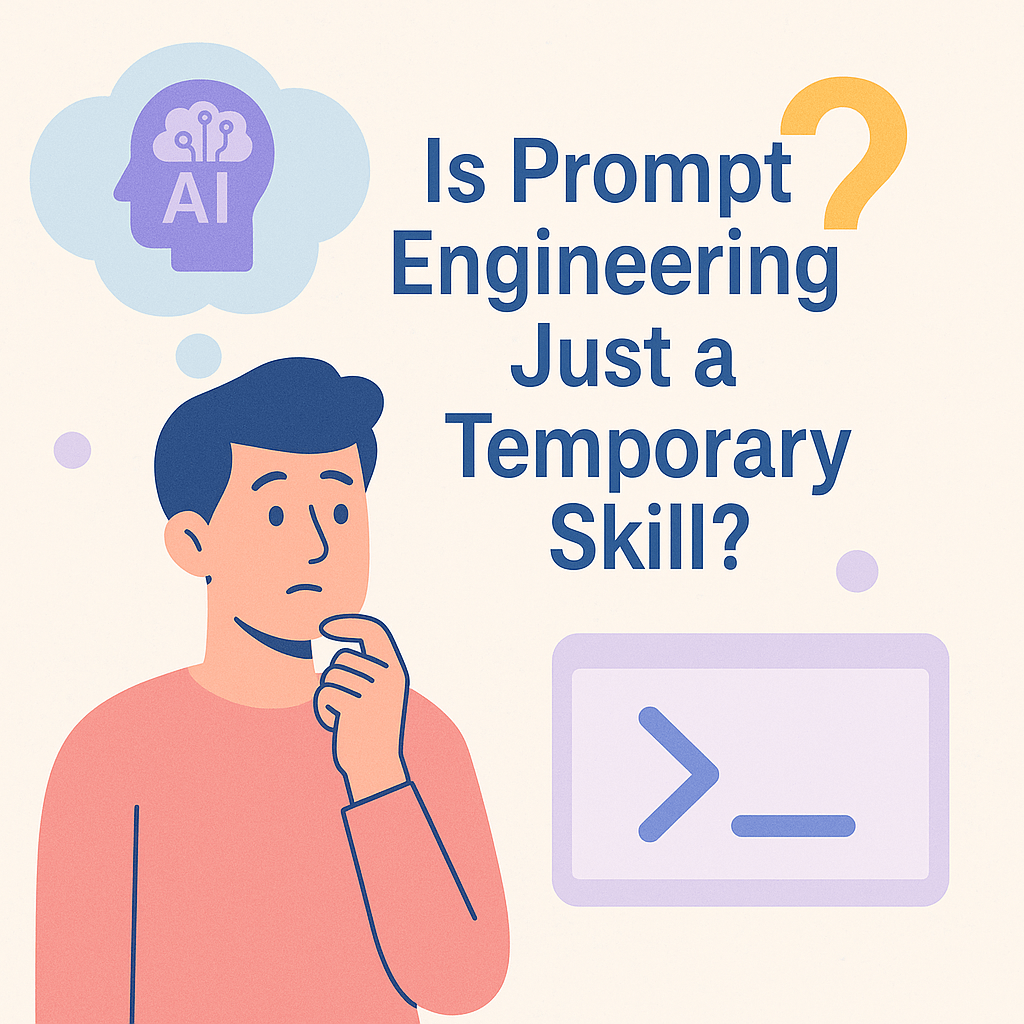We’ve all heard the phrase: “Prompt engineering is the new coding.”
It’s become a buzzword in job listings, workshops, LinkedIn posts, and startup pitch decks. And yes — right now, crafting smart prompts can absolutely unlock massive power from AI tools.
But here’s the question I keep coming back to:
Is prompt engineering really a skill everyone needs to learn? Or is it just a transition phase — a temporary bridge between AI’s capabilities and more intuitive interfaces?
Let’s unpack that.
Prompt Engineering = Talking to the Machine
At its core, prompt engineering is about learning how to talk to AI in a way it understands best.
You tweak your words. Add instructions. Define structure. Maybe even include examples.
Example prompt:
“You are a marketing expert. Write a 3-paragraph email to re-engage inactive users. Use a friendly but urgent tone. Include a call-to-action with a 15% discount.”
That’s a solid prompt — and if you’ve played around with ChatGPT, Claude, or Gemini, you’ve probably written a few like it.
But here’s the thing: most people don’t want to write prompts. They want outcomes.
The Interface Layer Is Evolving — Fast
Just like you don’t write SQL to search in Google, you won’t need to engineer prompts to use AI forever.
We’re already seeing a new generation of AI apps that hide prompt complexity behind friendly UIs. They give you buttons, sliders, templates, or workflows — and the AI just does its thing behind the scenes.
Some great examples:
- Notion AI: You don’t need to prompt it with “Write a concise summary of the following notes.” You just highlight and click Summarize. Boom. AI handles the prompt.
- Jasper: Its templates for blog posts, emails, and ad copy turn complex prompting into fill-in-the-blank fields.
- Uizard: Designers can sketch wireframes and describe ideas in plain English — the AI generates real UIs. No prompt engineering required.
- Gamma.app: Creates slide decks from a sentence. No need to prompt for layout, structure, or tone — it figures it out.
- Typeform’s AI: Ask it to “build a feedback survey for a SaaS onboarding experience” and it just does — the prompt writing is invisible.
In all these cases, the prompt is still happening, but it’s happening under the hood.
Even AI Can Help Write Better Prompts
Here’s the irony. You can actually use AI to help write better prompts.
Try this:
“I want to write a prompt for ChatGPT to help generate a weekly email campaign plan. Can you suggest a clear and structured prompt for me to use?”
And voilà — the AI becomes your prompt engineer.
This creates a funny loop: AI helping you prompt other AI. But it also shows how prompt engineering is getting abstracted away — just like you don’t need to know TCP/IP to use Zoom.
History Repeats Itself: Remember Code vs No-Code?
We’ve seen this play out before.
There was a time when building software meant writing code from scratch. Then tools like Bubble, Webflow, Zapier, Glide, and Retool came along — and suddenly, you could build apps, websites, and automations without writing a single line of code.
Yes, you can still go the raw-code route (and sometimes you should), but for 80% of use cases? The no-code/low-code movement gave people access without needing technical depth.
Prompt engineering is going through that same evolution.
Right now, it’s powerful and useful — but it won’t be mandatory forever. Because the interface layer is catching up.
A Quick Example: With vs. Without Prompt Engineering
With Prompt Engineering:
You want to write a product launch email.
You open ChatGPT and write:
“You are an experienced SaaS marketer. Write a product launch email introducing our new analytics dashboard. Keep it under 150 words, emphasize speed and clarity, include a CTA to try it out.”
It works — but you had to think about structure, tone, roleplay, constraints, and more.
Without Prompt Engineering:
You open a tool like Jasper, choose “Product Launch Email” from a dropdown, fill in a few fields:
- Product: Analytics Dashboard
- Feature: Speed and clarity
- Word count: Under 150
- CTA: Try it out
Then click Generate.
Same result. No prompt writing.
So… Should Everyone Learn Prompt Engineering?
Here’s my take:
- If you work closely with AI (developers, strategists, marketers, analysts), it’s useful to understand prompting — at least for now. It gives you more control and precision.
- If you’re a casual user, you’ll increasingly get by just fine with smart tools that do the prompt writing for you.
Just like most people don’t know how to write HTML but still build websites on Webflow, most people won’t need to master prompt engineering to work with AI.
It’s not a forever skill. It’s a bridge skill.
tldr:
Prompt engineering is like the training wheels of AI communication. It’s helping us learn how to think and talk in ways machines understand.
But the future? It’s not about better prompts. It’s about better interfaces. AI won’t need you to say it just right — it’ll know what you mean.
So yes, prompt engineering is important today. But in the long run? The best prompt is no prompt at all.
